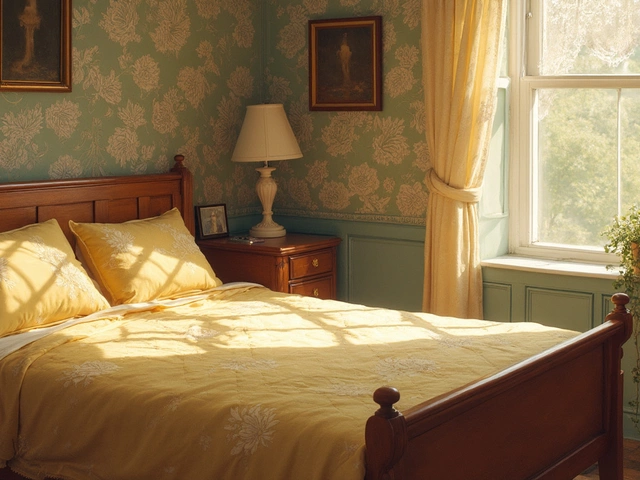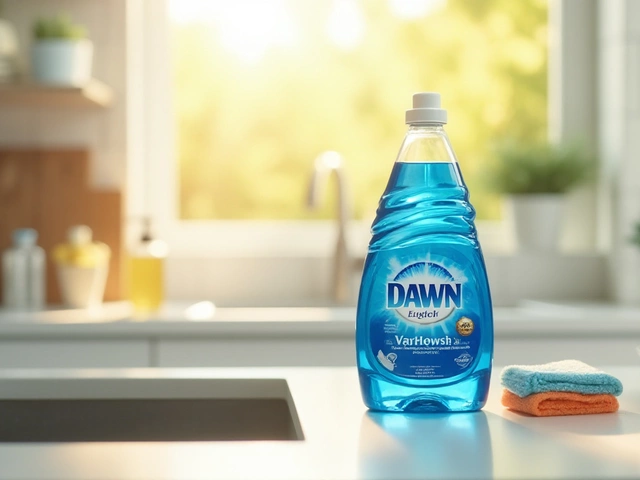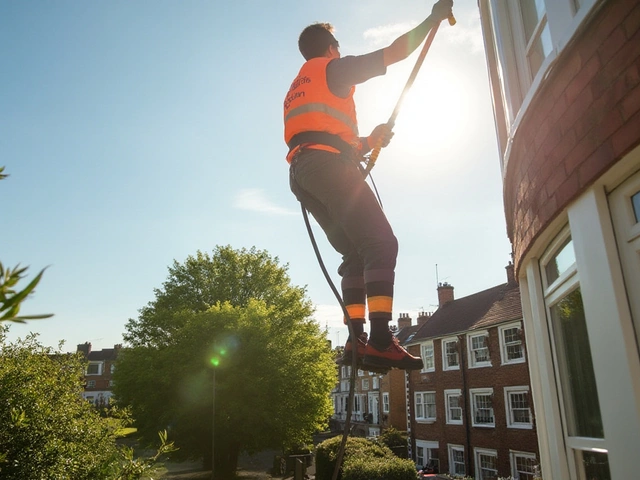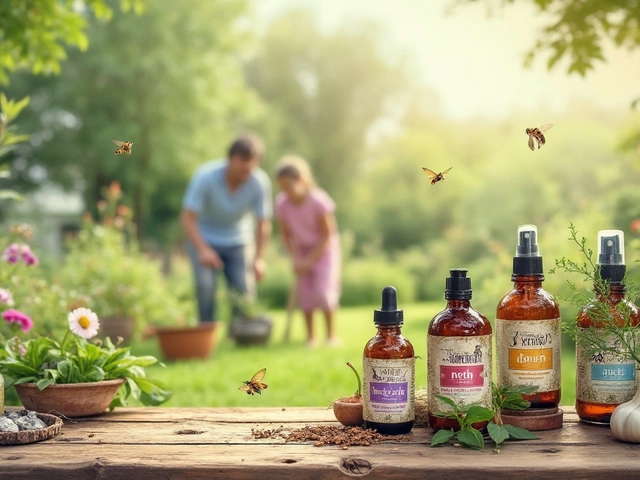If you've ever washed your windows with regular soap or dishwashing liquid, you probably ended up with streaks, haze, or a gummy mess. It's no accident that the pros almost never use regular soap for window cleaning — and it's not because they're trying to keep industry secrets from you. Turns out, soap leaves residue that clings to glass, dust, and water spots. This actually makes windows get dirty again faster instead of staying clean.
Some people think more suds mean more cleaning power. But on glass, extra soap just makes things worse. It's tough to rinse off fully, and if any is left, sunlight will highlight every single streak. Pros learned long ago that even fancy soaps don’t dry spotless on windows. If you want to copy their results at home, it’s time to forget the dish soap you’ve got under your sink.
- The Problems With Soap on Windows
- What Professional Window Cleaners Actually Use
- Streaks, Residue, and Other Nightmares
- Pro Tips for a Streak-Free Shine at Home
The Problems With Soap on Windows
It's wild how many of us just grab the nearest bottle of dish soap when it's time to clean the windows. But here’s the deal: most window cleaning experts avoid soap and for good reasons. Everyday soaps are packed with stuff like fragrances, moisturizers, and other extras designed for skin or plates—not for glass. These extras stick to the window, forming a thin, invisible film where dirt loves to cling. The result: you clean more, but your glass gets grimy quicker.
Even the mildest dish soaps leave behind something. Unless you rinse each window with gallons of clean water (which isn’t realistic, right?), you’re always going to get streaks or hazy patches. That's why professional cleaners noticed that windows just never looked completely clear or stayed clean for long when soap was in the mix. Joe Lewis, owner of a major window cleaning service in Austin, put it simply:
“Soap is your enemy when it comes to a streak-free finish. It leaves more mess behind than it removes.”
You might be thinking, "What about bubbles? Don’t they lift the dirt?" They do. But the problem is bubbles leave all that residue behind afterward. That’s the stuff that sunlight makes super obvious—your windows look fine on a cloudy day, but then every streak lights up as soon as the sun hits.
- Residue attracts new dirt: Soapy films pull in dust, pollen, and fingerprints faster than clean glass.
- Streaks are harder to avoid: No matter how well you wipe, a tiny bit of soap sticks around.
- Extra rinsing needed: Getting rid of all the soap means a lot more water and effort.
Check out this quick data breakdown comparing soap to a pro-style solution:
| Method | Streaks Reported | Time to Clean Again |
|---|---|---|
| Dish Soap & Water | 88% | 7-12 days |
| Professional Solution | 13% | 18-25 days |
Bottom line: using regular soap in your window cleaning routine causes more trouble than it solves. No wonder pros leave it on the shelf!
What Professional Window Cleaners Actually Use
Walk past any real window cleaning crew, and you won’t see bottles of dish soap or fancy foaming stuff. Instead, the pros swear by one main thing: a mix of water and a tiny bit of specialized window cleaning solution. The goal is a streak-free, crystal finish—no residue, no grime left behind. That’s why you’ll spot buckets filled with almost-clear liquid, not big bubbles.
Most professional window cleaning products are concentrated and made to break up grease and dirt without leaving a film. Some use a drop or two of liquid like Unger or Ettore brand cleaner in a big bucket of water for a whole day’s work. But if you check what’s actually in those bottles, you’ll find the main ingredient is usually isopropyl alcohol or a simple surfactant—not soap. The cleaning solution evaporates fast, which really matters when working on sunny days or upper floors.
Here’s what the typical window pro’s kit includes (besides skill and steady nerves):
- A squeegee (can’t get that razor-sharp edge with a paper towel)
- A bucket with a small splash of window solution
- Microfiber towels for buffing edges (not for mass wiping)
- Sometimes: pure water fed through a filtration system for spot-free rinsing on big jobs
Brands like Unger, Ettore, and Pulex are favorites. The reason? No streaks and fast results. Instead of soap, they pick stuff specifically made to avoid any sticky leftovers. On larger commercial buildings, pros sometimes use deionized water systems to avoid even microscopic minerals that cause spots. These setups turn regular tap water into pure water that dries crystal clear, no matter what.
Check out how little actual cleaning solution goes into a pro mix:
| Product | Amount Used | Water |
|---|---|---|
| Unger Liquid | 2 teaspoons | 5 gallons |
| Ettore Squeegee Off | 2-3 capfuls | 2-3 gallons |
| Deionized Water | None needed | 100% |
So, the secret is less about the cleaning potion and more about using the right tools and the lightest touch of a streak-free solution. Forget about big sudsy messes—mild, fast-drying liquids and a good squeegee make your glass look like new.
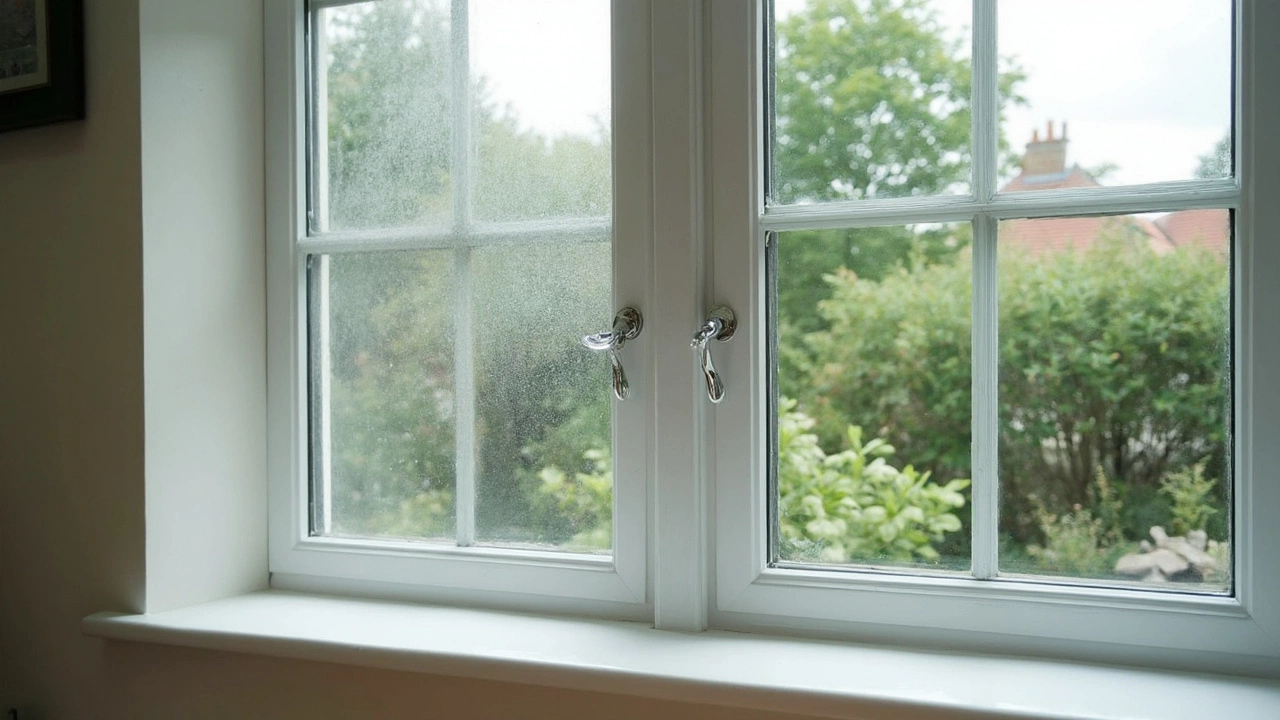
Streaks, Residue, and Other Nightmares
If you ask any professional about window cleaning and streaks, they'll tell you that regular soap is one of the main villains. Soap creates a thin film that sticks to glass. This residue grabs dust and pollen out of the air, so your hard work barely lasts a week before things start looking grimy again. And if you use too much soap, or skimp on rinsing, streaks show up every single time the sun hits the window.
Here's a simple breakdown of what happens:
- Soap molecules don’t completely rinse away from glass, even when you scrub hard.
- Once dry, the leftover residue reflects light unevenly, making streaks super obvious.
- That same residue acts like glue for fingerprints and more dirt, so your windows get dirty faster than if you had used a pro cleaner.
There was a test run by a commercial janitorial company (Clean Mark, 2023) where they compared soap vs. professional-grade window cleaner on a set of office windows. The windows cleaned with soap had visible streaks and dull spots under sunlight, while the pro solution came out crystal clear and stayed clean an extra week.
| Cleaning Method | Streaks Visible | Days Until Noticeable Dirt |
|---|---|---|
| Dish Soap + Water | Yes | 5 |
| Pro Window Solution | No | 12 |
If you're after that streak-free look, you want to avoid any product that leaves a film. That rules out most soaps, laundry detergents, or anything labeled “all-purpose.” Professional window cleaners stick with ingredients that completely evaporate and don't cling to the glass. The difference is hard to miss, especially when sunlight pours in and shows every fingerprint and missed spot. Trust me, my kids Damon and Callum can spot a streak from across the room—and you’d rather not hear them complain about windows you just cleaned!
Pro Tips for a Streak-Free Shine at Home
Getting that pro-level streak-free look is totally doable, even without fancy gear. First off, forget about any thick soap or dish liquid — those belong with your plates, not your windows. Window cleaners have one big secret: they use just a little bit of a special window cleaning solution, usually mixed right into a big bucket of water. A lot of pros swear by good old vinegar (one part white vinegar to ten parts water) if you want a cheap, easy option with no chemicals.
Here’s a simple method for keeping your glass clean that won’t leave streaks:
- Use a soft sponge or a strip washer to apply your cleaning liquid all over the glass. Don’t soak it — just damp is perfect.
- Switch to a squeegee. Start at the top and pull down in a firm, steady motion, wiping the blade with a lint-free rag after every pass. This is key: a clean squeegee blade means no lines left behind.
- If there are any drips or corners with excess water, buff them gently with a microfiber cloth — lint-free towels make a difference here.
- Don’t clean in direct sun. Sun bakes the water and cleaner onto the glass before you can squeegee it off, causing streaks.
- For really grimy or greasy spots (like fingerprints or dog nose art), use a tiny drop of dish soap in your mix, but rinse thoroughly afterward.
If you want proof it works, there’s a reason nearly every professional window cleaning checklist looks pretty much the same. Here are a few products most window pros actually use:
- Mops/strip washers (makes spreading cleaner easy)
- Squeegees with a sharp, soft rubber blade
- Microfiber towels (they don’t leave lint)
- Glass-safe scrapers for stuck-on gunk
- Extension poles for higher windows
Check out this quick comparison of common window cleaning mixtures for at-home use:
| Mixture | Effectiveness | Streak Risk |
|---|---|---|
| Water + Dish Soap | Good on grime, needs rinsing | High if not rinsed fully |
| Vinegar + Water | Great at shine, eco-friendly | Low |
| Commercial Glass Cleaner | Easy, quick | Medium if too much used |
Forget the fancy tools you see on TV. Actual window cleaning comes down to clean water, the right cloths, and not overthinking it. Just follow these steps and you’ll get that “just cleaned by a pro” look — and you won’t need to hide your windows when guests show up.
